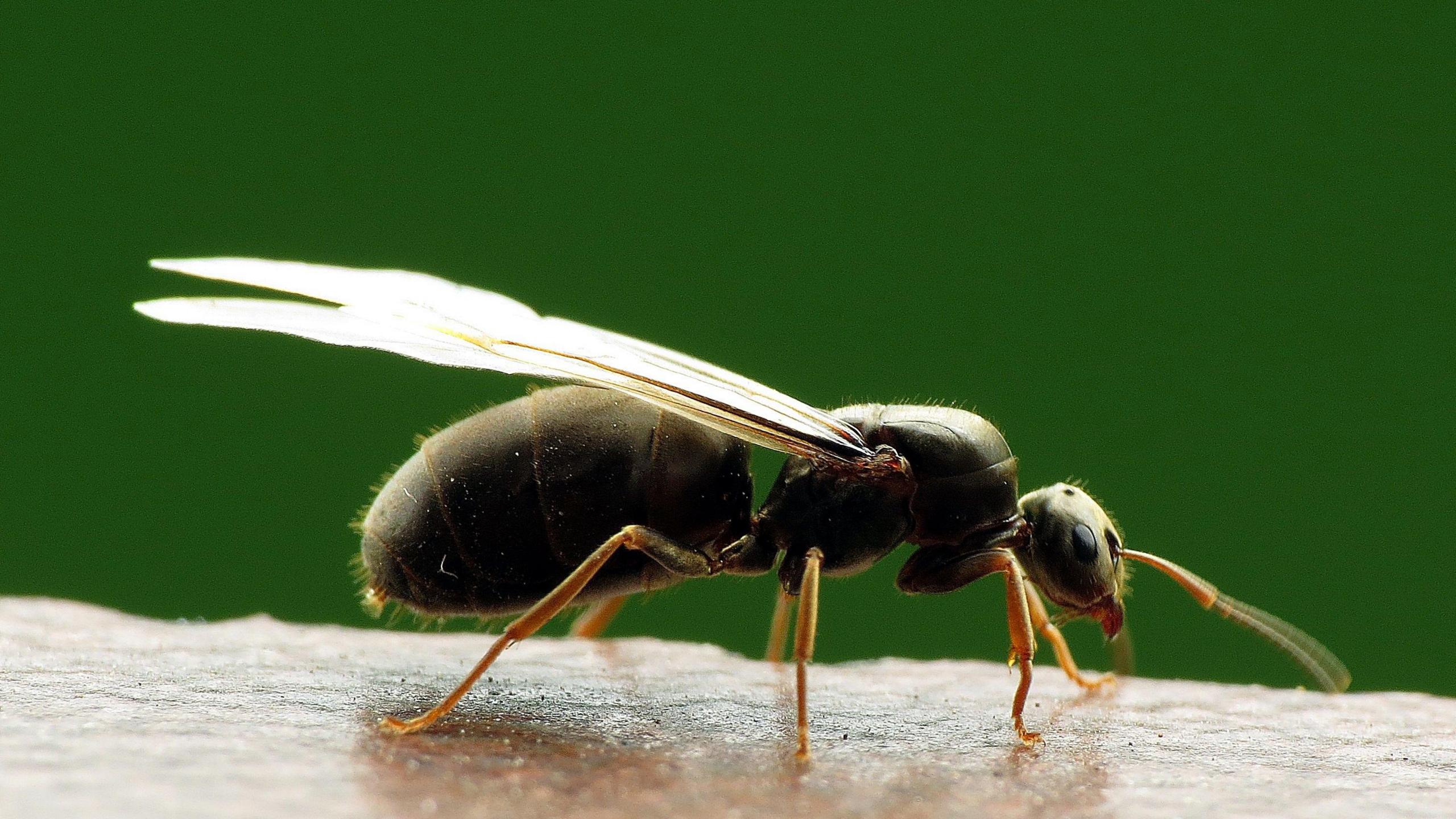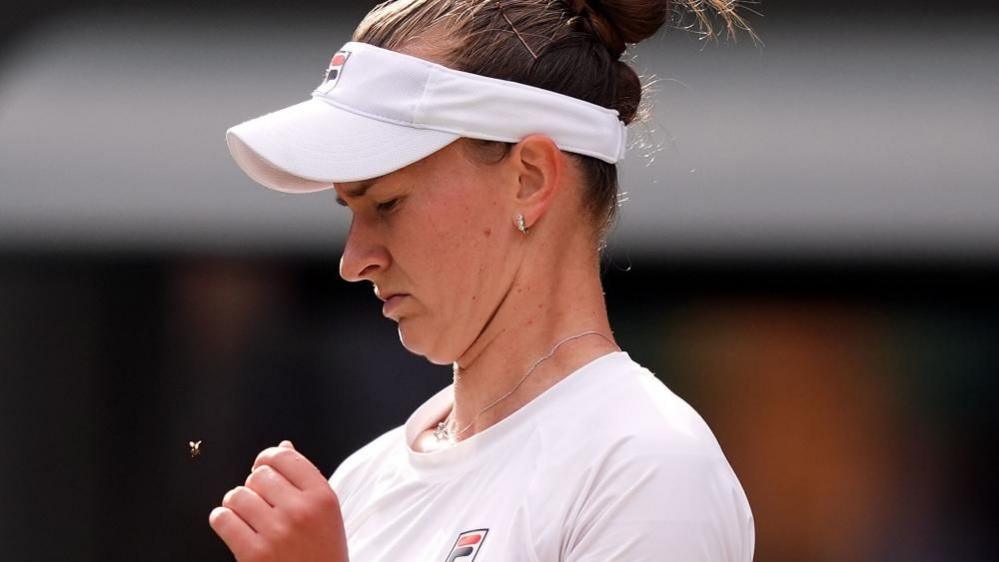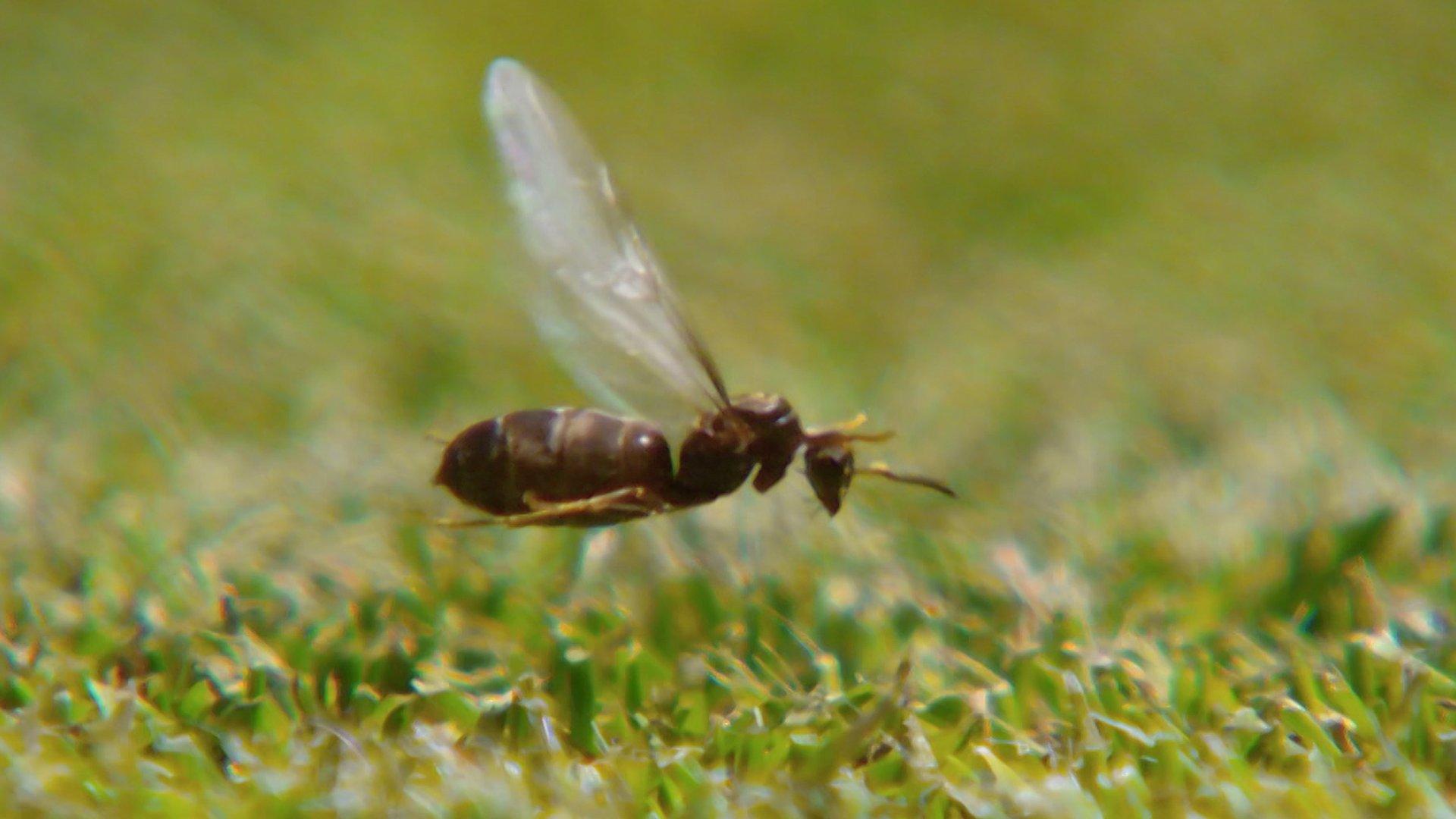Why do flying ants all appear at once?

The annual event usually occurs in July or August during hot and humid weather
- Published
Clouds of ants have been taking to the skies in an annual event that only begins when weather conditions are just right.
But what is flying ant day, external and why does it happen in such a short time frame?
The event usually arrives in about mid-July, as queens emerge and travel to set up new colonies, surrounded by males.
The University of Cambridge's Prof Adria LeBoeuf, an expert on the phenomenon, said: "It is this mysterious, somehow agreed-upon day, once or a couple of times a year, when the temperature conditions are just right and all the males and the new queens fly up into the sky to mate.
"The reason it's such a phenomenon in the UK is one ant species is abundant across the whole country, the black garden ant, and they all do this type of reproduction."
It can be seen in parts of Europe, broadly speaking, but is not seen in the United States or the Middle East.

Queen ants can reach up to 15mm in length
Why now?
"They want a hot day, usually above 25C - preferably 30C - but [Wednesday] was nearer 25C," said Prof LeBoeuf, whose research focuses on how evolution has engineered social life.
"It's been quite cold of late, under 20C, so they would not fly in those conditions.
"It can't be too windy and often it has just rained or it will rain soon."
Does it all take place on the same day?
"It depends on the micro-climate," said Prof LeBoeuf.
"They usually do it late afternoon and that's what happened [on Wednesday] in Cambridge - but it might be [Thursday] in York if it is a little cooler there."

Prof Adria LeBoeuf (second right) and her team captured some of the ants as part of her long-term research
Are there great swarms of ants?
"We don't tend to see a swarm when you're walking around" she said.
"If you look, you'll see one of the queens and, a metre away, another.
"In our research, we captured about 500 in about 45 minutes.
"It's amazing to think of all those tiny workers who have reared these giant queens that have just flown.
"The queen is at least 11 times bigger than a worker ant."
What happens next?
"The queen comes back to land and she cuts off her wings, digs a hole and won't eat for at least a month," she explained.
"She digests her own flight muscles until her new workers - all female - are ready to feed her.
"It's an insane physiological process."

Flying ants disturbed a number of matches during Wimbledon in 2017
So where do the males go?
"All the males live a brief life, a few months before they fly and then they die a few days after the flight," said Prof LeBoeuf.
"Pretty much all the ants you see are females. It's a real feminist story; a bunch of ladies working together.
"But, in a way, the males live on a very long time. When they mate with the queen, she stores and uses that sperm for the rest of her whole 30 years."
Why study the ants?
"We're interested in how bodies distribute resources to other bodies," said Prof LeBoeuf.
"Ants are great because they do a lot of social transfer of material to each other.
"And with these ants, there is the system where the queen breaks down her own body to lay eggs and then feed her own young.
"It's an amazing example of the transfer of resources by the body itself."
Follow Cambridgeshire news on Facebook, external, Instagram, external and X, external. Got a story? Email eastofenglandnews@bbc.co.uk, external or WhatsApp us on 0800 169 1830
- Attribution
- Published5 July 2017
